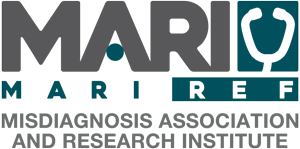Specialty: Developmental Disorder / Paediatrics / Neurology
Author: Praneesh Chandrasekhar
Editor: Abidemi Oseni
Main MARI website summary
Autism is a developmental disorder that can be diagnosed early in life and is typically
a lifelong condition. Autism typically affects behaviours surrounding social interaction,
communication and repetitive motor behaviours. The condition can be caused by a mix of
environmental and genetic factors, most of which have to do with brain development during
neonatal phases of life. Current research points to different neural connections being formed
in the brains of patients with autism.
Diagnosis of Autism requires initial testing during well being check up of toddlers
and then, when under suspicion of having Autism, further testing and observation is
performed by paediatricians. Then, given the proper diagnosis and elimination of co-
morbidities or differential diagnosis such as global development disorder (GDD), the patient
undergoes treatment, typically surrounding behaviour therapy. In addition, treatment options
include exploration of pharmacological treatments.
Social Media Summary
Autism, now designated as ASD (autism spectrum disorder), is a developmental disorder that
affects three aspects of development; social interaction, communication and motor
behaviours. Autism is common and can be fully diagnosed as early as the age of two.
Diagnosis of autism is done through a Paediatrician and is usually caught during well-being
check ups of children. Diagnosis involves initial assessments followed by further in depth
evaluations. There are treatments for autism that mostly circulate around behavioural forms
of therapy since patient behaviour is greatly affected by autism. In addition, pharmacological
treatments are available for patients that can target either specific aspects of autism or can
target autism as a whole and improve the symptoms in patients.
Instagram: @praneesh.c
Overview
Autism is considered to be one of the most common developmental disorders and in 2013 it
became known as Autism Spectrum Disorder (ASD). ASD covers a group of
neurodevelopmental disorders including autism, Asperger's syndrome and Pervasive
developmental disorder-not otherwise specified (Sharma, Gonda & Tarazi., 2018).
ASD is brought on by a series of environmental and genetic factors that can affect a child as
early as neonatal stages and is typically a lifelong condition. The symptoms that surround
autism are typically associated with social interaction as well as motor behaviours. Diagnosis
of Autism takes the form of treating the symptoms and are typically behaviour based therapy
as well as some level of medications.
What Causes Autism?
Autism is thought to be brought on by a mix of genetic, environmental and developmental
factors. As mentioned earlier, autism itself was coined as ASD (autism spectrum disorder)
covering a wider array of conditions as opposed to autism alone (Sharma, Gonda & Tarazi.,
2018). Although exact genetic factors that contribute to ASD have not been discovered,
certain genes that contribute to the presence of ASD have. For example, the genetics that play
a role in brain development, neurotransmitter function as well as neuronal excitability are all
potential targets for examination. Many of these target genes play a role in what happens at a
location known as the synapse (Hodges, Fealko & Soares., 2020). In addition, there has been
proof that children with ASD have accelerated brain development at a younger age, this leads
to different connections forming in the brain as opposed to that of an average child (Lord,
Elsabbagh, Baird, Veenstra-Vanderweele., 2018). While no direct causes of ASD have been
confirmed, there continue to be relevant factors revealed.
Risk Factors
● Older age in parents (every 10 year increase in age increased risk by 18-21%)
● Birth complications
○ Maternal haemorrhage
○ Blood type incompatibility
○ Birth injury
○ Birth weight < 1500 grams
○ Feeding difficulties at birth
● Maternal Valproate use during pregnancy
● Maternal antidepressant use during pregnancy
● Maternal smoking
● Prenatal exposure to particulate matter (i.e. lead)
● Immigration
● The presence of ASD in one twin
(Modabbernia, Velthorst, Reichenberg., 2017)
(Sharma, Gonda & Tarazi., 2018)
Symptoms
Children with ASD show deficits in 3 areas:
● Social interaction
● Communication
● Repetitive/restrictive behaviours
(Sharma, Gonda & Tarazi., 2018)
The following are considered general symptoms:
● Abnormal social behaviour
● Failure of normal back and forth conversation
● Difficulty maintaining or building relationships
● Constantly performing simple motor movements
● Inflexible adherence to rules
● Highly fixated on certain goals and tasks
● Hyperreactivity to sensory input
(Lord, Elsabbagh, Baird, Veenstra-Vanderweele., 2018)
Diagnosis
Diagnosis of ASD can be reliably performed by the age of 2 (NIMH., 2022). ASD screening
can be done with 16-30 month toddlers with the “modified checklist for autism in toddlers,
revised with follow up” (MCHAT-R/F) (Mukherjee., 2017).
Children are categorised as follows:
● Low risk: no further evaluation required
● Medium risk: Further evaluation required post 1 month if symptoms still present)
● High risk: Immediate evaluation required
(Mukherjee., 2017)
After using the MCHAT-R/F, if further evaluation is required, the following steps shall be
taken:
1. History
a. Assessing parental concerns and complaints
b. Symptoms
c. Any level of pregnancy/birthing history
d. Family history
e. Socio-economic standards
2. Examination: measuring physical standards and checking for any dysmorphic body
features
Examination: clinical and developmental assessment
3. Observation: observing children in a natural environment
4. Determine which domains have been affected: social interaction, communication or behaviours
5. Applying the DSM V as a tool for diagnosis based on behavioural means
a. The presence of any of the aforementioned symptoms
b. The presence of symptoms from early childhood
c. Symptoms impair patients ability in either social, occupational or other
important areas of life
d. Symptoms are not better explained by GDD (global developmental delay) or
intellectual disability.
6. Evaluate for comorbid conditions, which can include:
a. GDD
b. Epilepsy
c. Psychiatric Illness
d. Feeding disturbances
e. Gastrointestinal illnesses
f. Sleep disturbances
g. Dysmorphism
7. Diagnosis
8. Referral: for further in depth evaluation
(Mukherjee., 2017)

Treatment
Treatment for ASD is meant to manage the symptoms so as to ensure they do not get
in the way of activities of daily life. For children with ASD, high intensity applied behaviour
analysis can be used to determine behaviours and has been proven to improve cognition and
language skills in younger patients (Genovese & Butler., 2020). As well, early intensive
behavioural intervention is productive and delivered at 20-40 hours a week for several years
(Genovese & Butler., 2020). For the adult population, making use of group or individual
social interaction programs has shown benefits with communication and building and
maintaining social connections. In addition, social skills groups can improve social
interaction as well.
Pharmacological interventions have also been applied.
The pharmacological interventions can be divided into the following sections:
● Atypical Antipsychotics: Reduces hyperactivity, irritability, aggression, depression,
and stereotypic movements
○ Clozapine
○ Risperidone
○ Aripiprazole
● Selective serotonin reuptake inhibitors: Reduces stereotyped and repetitive
movements
○ Fluoxetine
○ Fluvoxamine
○ Sertraline
○ Paroxetine
○ Escitalopram
○ Venlafaxine
● Tricyclic antidepressant: Decreases hyperactivity and aggression
○ Nortriptyline
○ Clomipramine
● Anticonvulsants: Improves overall autistic symptoms
○ Lamotrigine
○ Valproic acid
○ Levetiracetam
● Glutamate antagonist: Decreases hyperactivity and social interaction
○ Amantadine
○ Memantine
● Acetylcholinesterase inhibitors: Improves overall autistic symptoms
○ Rivastigimine
○ Donepezil
○ Galantamine
● Psycho-stimulant: improves severe autistic behaviours in children
○ Methylphenidate
● Adrenergic Alpha 2 receptor agonists: Improves hyperactivity and attention
○ Clonidine
○ Guanfacine
● Opiate antagonist: Improves hyperactivity, irritability and self-injuries
○ Naltrexone
(Eissa et al., 2018)
References
1. NIMH » Autism Spectrum Disorder. (n.d.). Retrieved July 2, 2022, from
https://www.nimh.nih.gov/health/topics/autism-spectrum-disorders-asd#part_2285
2. Eissa, N., Al-Houqani, M., Sadeq, A., Ojha, S. K., Sasse, A., & Sadek, B. (2018).
Current enlightenment about aetiology and pharmacological treatment of autism
spectrum disorder. Frontiers in Neuroscience, 12(MAY), 304.
https://doi.org/10.3389/FNINS.2018.00304/BIBTEX
3. Genovese, A., & Butler, M. G. (2020). Clinical Assessment, Genetics, and Treatment
Approaches in Autism Spectrum Disorder (ASD). International Journal of Molecular
Sciences 2020, Vol. 21, Page 4726, 21(13), 4726.
https://doi.org/10.3390/IJMS21134726
4. Hodges, H., Fealko, C., & Soares, N. (2020). Autism spectrum disorder: definition,
epidemiology, causes, and clinical evaluation. Translational Paediatrics, 9(Suppl 1),
S55. https://doi.org/10.21037/TP.2019.09.09
5. Lord, C., Elsabbagh, M., Baird, G., & Veenstra-Vanderweele, J. (2018). Autism
spectrum disorder. The Lancet, 392(10146), 508–520. https://doi.org/10.1016/S0140-
6736(18)31129-2
6. Mukherjee, S. B. (2017). Autism Spectrum Disorders — Diagnosis and Management.
Indian Journal of Paediatrics, 84(4), 307–314. https://doi.org/10.1007/S12098-016-
2272-2/FIGURES/1
7. Sharma, S. R., Gonda, X., & Tarazi, F. I. (2018). Autism Spectrum Disorder:
Classification, diagnosis and therapy. Pharmacology & Therapeutics, 190, 91–104.
https://doi.org/10.1016/J.PHARMTHERA.2018.05.007
